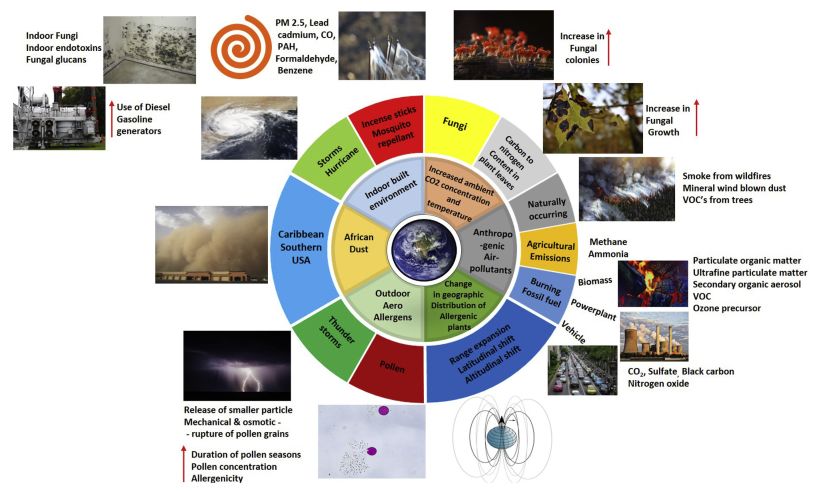Release date:2019-06-26

JACI
[IF:13.258]
Impact of weather and climate change with indoor and outdoor air quality in asthmatic patients DOI: org/10.1016/j.jaci.2019.02.018
Abstract:
Weather and climate change are constant and ever-changing processes that affect allergy and asthma. The purpose of this report is to provide information since the last climate change review with a focus on asthmatic disease. PubMed and Internet searches for topics included climate and weather change, air pollution, particulates, greenhouse gasses, traffic, insect habitat, and mitigation in addition to references contributed by the individual authors. Changes in patterns of outdoor aeroallergens caused by increasing temperatures and amounts of carbon dioxide in the atmosphere are major factors linked to increased duration of pollen seasons, increased pollen production, and possibly increased allergenicity of pollen. Indoor air pollution threats anticipated from climate changes include microbial and mold growth secondary to flooding, resulting in displacement of persons and need for respiratory protection of exposed workers. Air pollution from indoor burning of mosquito repellants is a potential anticipatory result of an increase in habitat regions. Air pollution from fossil fuel burning and traffic-related emissions can alter respiratory defense mechanisms and work synergistically with specific allergens to enhance immunogenicity to worsen asthma in susceptible subjects. Community efforts can significantly reduce air pollution, thereby reducing greenhouse gas emission and improving air quality. The allergist's approach to weather pattern changes should be integrated and anticipatory to protect at-risk patients.
First Author:
Jill A. Poole
Correspondence:
Nebraska Medical Center, Omaha, NE 68198.
All Authors:
Jill A. Poole, Charles S. Barnes, Jeffrey G. Demain, Jonathan A. Bernstein, Mahesh A. Padukudru, William J. Sheehan, Guillermo Guidos Fogelbach, James Wedner, Rosa Codina, Estelle Levetin, John R. Cohn, Steve Kagen, Jay M. Portnoy, Andre E.
2019-05-08 Article
 江南游戏官网中国有限公司
江南游戏官网中国有限公司
